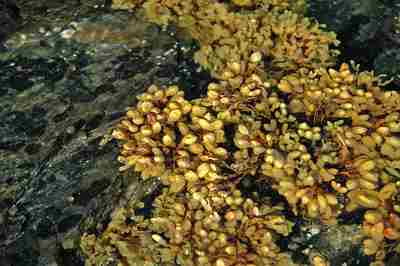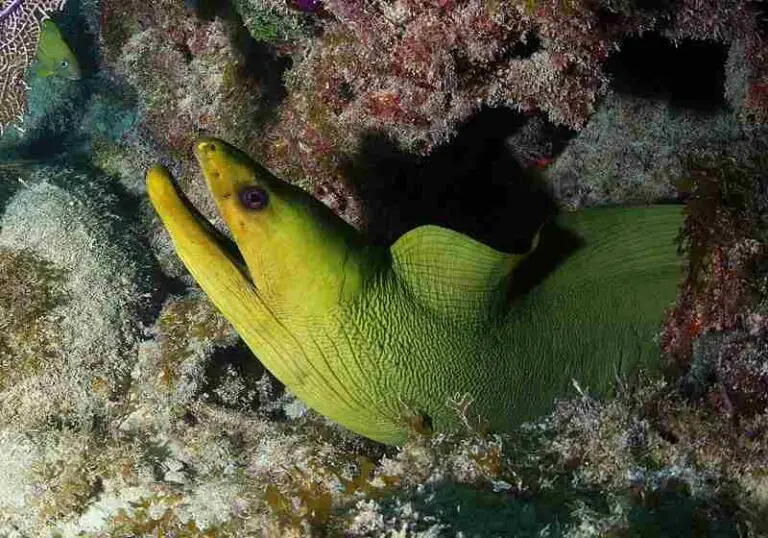11 Producers in Freshwater Ecosystems Discussed
Producers in freshwater ecosystems are; diatoms, brown algae, green algae, cattails, water lilies, alders, aspens, water hyacinths, mosses, liverworts, and photosynthetic bacteria.
This article discusses the producers in freshwater ecosystems and their characteristics, as follows;
1). Diatoms: Producers in Freshwater Ecosystems
Diatoms are an important group of microalgae that have a significant function as primary producers in both freshwater and marine ecosystems. This section highlights their basic characteristics and functions in freshwater environments.
Basic Characteristics of Diatoms
Characteristics of diatoms are; photosynthetic capability, silica cell walls, abundance and diversity.
Diatoms are single-celled microalgae that harness light from solar radiation through photosynthesis. They contain chloroplasts, and pigments such as chlorophyll, which enable them to convert light energy into chemical bioenergy in the form of organic compounds like sugars.
Another feature which diatoms possess, is unique cell walls that are made of silica, which gives a glass-like aspect to their appearance. These walls are intricately structured and can be highly ornate, contributing to their diversity and identifiable characteristics.
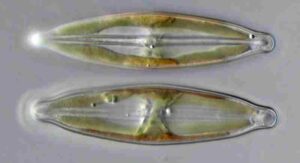
As remarked above, diatoms are highly diverse, and abundant in various aquatic ecosystems. They come in a broad range of shapes and sizes, and adapt to different ecological niches.
Functions of Diatoms in Freshwater Ecosystems
Functions of diatoms in freshwater ecosystems are; photosynthesis, oxygen cycling/production, nutrient recycling, and environmental quality indication.
Diatoms are fundamental primary producers in freshwater ecosystems. Through photosynthetic mechanisms, they synthesize organic matter (biomass), sequester carbon, and generate oxygen. This forms the basis of the aquatic food chain by providing sustenance for herbivorous aquatic animals, such as zooplankton, insects, and some small fish species.
It is widely agreed that diatoms are responsible for a significant portion of the Earth's total oxygen production. They contribute immensely to the oxygenation of freshwater habitats, by releasing oxygen as a byproduct during photosynthesis, thereby supporting the respiratory processes of different aquatic organisms.
Also, diatoms are fully involved in the recycling of nutrients and other abiotic resources, especially nitrogen and silica, within freshwater ecosystems. They are able to absorb and store these nutrients, and when they die and sink to the bottom, they release the same nutrients back into the water column, thereby ensuring a continuous supply of essential elements for other aquatic life.
Diatoms are utilized as bioindicators of water quality in freshwater ecosystems. Their species richness, composition and abundance can reflect the vitality and ecological condition of a water body. Changes in diatom populations can be indicative of water pollution, temperature changes, eutrophication, or other environmental disturbances.
*Additional Notes and Reiterations On Diatoms in Freshwater
Diatoms are found in both marine and freshwater habitats. They can be abundant in various types of freshwater bodies, including rivers, streams, ponds and lakes.
Diatoms can grow and thrive in freshwater environments. They are adapted to both standing and flowing freshwater bodies and are often observed as brownish or greenish sludge on the bottom substrate of these systems.
The four primary functions of diatoms are outlined as follows:
1. Diatoms turn solar energy into sugar through photosynthesis.
2. They are responsible for producing a significant portion of the Earth's oxygen.
3. Diatoms contribute to nutrient cycling by sequestering and subsequently releasing essential nutrients.
4. They serve as bioindicators of water quality in freshwater ecosystems, by reflecting environmental conditions and disturbances.
2). Brown Algae
Brown algae, scientifically referred to as Phaeophyta, are a distinctive group of algae that predominantly thrive in marine environments.
However, there are some limited representations of brown algae in freshwater ecosystems. Below is a discussion of their basic characteristics and an answer to the question regarding their habitat.
Characteristics of Brown Algae
Characteristics of brown algae include their distinctive appearance, morphological variability, complex structure; and preference for marine habitats.
Brown algae are characterized by their brown or olive-green coloration, which can be traced to the presence of the pigment fucoxanthin. They vary in size and shape, with some species being significantly large, forming massive structures.
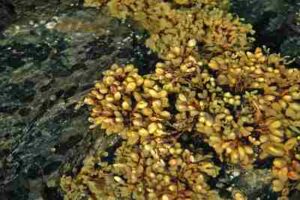
Unlike several other types of algae, brown algae exhibit a more complex thallus structure. They consist of holdfasts, blades and stipes. The holdfast anchors the algae to substrata, while the stipe provides support for the blades, which are the primary sites or instruments of photosynthesis.
The majority of brown algae are exclusively found in marine environments, with particular concentration along coastlines and in intertidal zones. They can grow to form large kelp forests that provide shelter and food for multiple marine organisms.
As earlier stated, brown algae are mainly marine organisms, so that the great majority of species are associated with saltwater habitats. While these algae are most commonly found in marine ecosystems, a few genera are also represented in freshwater environments. Brown algae that occur in freshwater zones are typically attached to substrata, such as rocks, and are generally not planktonic, in contrast to some other types of freshwater algae.
*Additional Notes and Reiterations On Brown Algae in Freshwater Habitats
Brown algae are predominantly found in brackish saltwater or marine environments. Although a few genera of brown algae are represented in freshwater, these are the minority, as the vast majority of brown algae are marine species.
Brown algae are not typically found in freshwater home aquariums, as they are primarily associated with seawater.
3). Green Algae: Producers in Freshwater Ecosystems
Green algae, scientifically described as Chlorophyta, are a diverse category of autotrophic organisms found in various aquatic habitats, which include freshwater ecosystems. Here, their basic characteristics are highlighted, alongside issues related to their habitat and nomenclature.
Characteristics of Green Algae
Characteristics of green algae include its greenish color, varied cellular make-up, habitat preference, and flexible reproduction strategy.
As the name suggests, green algae appear green due to the prominent presence of the green pigment chlorophyll. This pigment enables them to photosynthesize and convert light energy (alongside inorganic raw materials) into organic compounds.
Green algae can occur as unicellular, colonial, or multicellular organisms. Some species are single-celled, while others tend to form colonies or filaments.
Also, green algae are ecologically versatile, and can inhabit a broad range of aquatic environments. They are commonly found in ponds, rivers, lakes, and humid soils. While most green algae prefer freshwater habitats, some may also thrive in brackish and marine waters.
Two reproductive strategies are utilized effectively by green algae, which are able to reproduce both sexually and asexually. Asexual reproduction occurs through the formation of spores or cell division, while sexual reproduction typically entails the fusion of specialized reproductive cells.
*Additional Notes On Green Algae in Freshwater
Green algae can live in freshwater ecosystems. They are abundant in ponds, lakes, streams, rivers, fluvial swamps, and other types of freshwater habitats.
Green algae are not exclusively marine or freshwater organisms. While they commonly inhabit freshwater environments, some green algal groups can also grow in brackish or marine waters, thereby showcasing their adaptability to different salinity levels.
Green algae are also known as Chlorophyta. This scientific name reflects their green color (chloro-) and their status as a major autotrophic group (-phyta) within the algae classification.
4). Cattails
Cattails, scientifically referred to as Typha, can be described as iconic, emergent plants that thrive in wetland habitats, and function prominently as producers in freshwater ecosystems. This section addresses their basic characteristics, with additional notes regarding their adaptations and water-purifying abilities.
(Uses and) Basic Characteristics of Cattails
Basic attributes of cattails include; wetland preference, dense growth pattern, diversified reproductive strategy, and hydrophytic adaptation.
Cattails are perennial aquatic plants which prominently occur in a variety of freshwater habitats, including ponds, marshes, drainage ditches, tidal freshwater marshes, and lakes. They are typically associated with wetland environments.
In terms of growth, cattails can form dense colonies in shallow waters, and their long, slender leaves as well as tall, cylindrical flower spikes are distinctive, identifiable features. These flower spikes often persist throughout the year.
For reproduction, cattails utilize both seeds and rhizomes. Seeds are produced by their flowers and can be dispersed to new locations, while rhizomes are underground stems that creep, enabling cattails to spread and form extensive stands.
Cattails exhibit several unique adaptations for survival in freshwater ecosystems. The base of their leaves contains air-filled cellular tubes referred to as aerenchyma, which help transport oxygen to the base of the plant. This adaptation facilitates the survival of cattail roots in underwater environments, even in oxygen-depleted conditions.
Also, cattails have practical uses beyond being a part of the ecosystem. The leaves of cattails can be woven into mats, baskets, and seats. The brown flower heads can be utilized as torches after being dipped in fat or oil. The fluffy seeds that occur inside the tight brown flower heads can serve as tinder for starting fires.
*Additional Notes on Cattails in Freshwater Ecosystems
Cattails adapt to freshwater environments through several mechanisms; including air trapping and specialized. They are able to grow in both freshwater and slightly brackish water.
Their aerenchyma-filled leaves support the capture and transport of oxygen to their roots, allowing them to survive while being submerged in water. Additionally, their rhizomes enable them to spread effectively and form resilient colonies in wetland areas.
Cattails can contribute to water purification in their habitats. They help to trap sediment and silt within in their dense stands, thereby slowing the flow of water and allowing these particles to settle.
Moreover, cattail roots harbor microorganisms that aid in breaking down organic waste materials. Recent research has shown that cattails can also remove pollutants from the water surrounding their roots, contributing to the improvement of water quality in freshwater ecosystems.
5). Water Lilies: Producers in Freshwater Ecosystems
Water lilies, which are scientifically classified under the family Nymphaeaceae, can be described as remarkable freshwater plants with essential functions in aquatic ecosystems.
Here, a discussion of their basic characteristics and the significance which they hold in freshwater environments, is provided.
Characteristics of Water Lilies
Characteristics of water lilies include freshwater preference; hydrophytic adaptations, extensive rhizome growth patterns, and genealogical variety.
Water lilies are mainly found in freshwater environments, specifically in shallow and still fresh water bodies with relatively slow flow rates, such as ponds, lakes, and the edges of slow-moving streams. They are native to temperate and tropical zones around the world.
To support their survival in aquatic habitats, water lilies possess several specialized adaptations. These adaptations include large, floating leaves that rest on the water's surface, and facilitate the capture of ample sunlight for photosynthesis. The upper side of the leaves is typically coated with a cuticle to maintain dryness, while the underside is equipped with thorns for deterring potential predators.
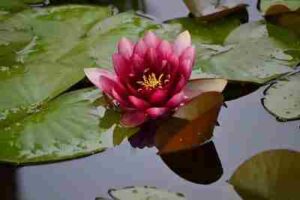
Water lilies typically are known to have extensive rhizome systems that are submerged in the mud at the bottom of their aquatic habitat. These rhizomes are connected to stalks that support the floating flowers and leaves.
There is a wide variety of water lily plants that can be distinguished from each other, with most of them thriving in larger ponds and lakes. However, there are also dwarf water lily types that are suitable for small garden ponds.
Significance of Water Lilies in Freshwater Ecosystems
In freshwater ecosystems, water lilies are significant for their contributions to habitat structuring, photosynthesis, nutrient uptake, and aesthetic ornamentation.
Water lilies contribute significantly to the structural diversity of freshwater ecosystems. Their floating leaves establish a unique habitat for some aquatic organisms by providing shelter, foraging areas, and microsites for breeding.
As remarked earlier, the large leaves of water lilies are instrumental for photosynthesis. They capture sunlight and convert it into chemical energy, supporting the plants' growth and contributing oxygen to the water column. Additionally, these floating leaves may offer shade and regulate water temperature, thereby creating more favorable conditions for underwater life.
Water lilies are effective in nutrient cycling, which they facilitate by absorbing nutrients like phosphorus and nitrogen from the water. This nutrient uptake helps to maintain water quality and prevent excessive nutrient levels that could result in water pollution.
The surface provided by water lilies serves as a platform for housing various aquatic invertebrates such as insects. Occasionally, fish, amphibians, and waterfowl may use water lilies as platforms for rest, or as sources of shelter and food.
Lastly, water lilies are known for their stunning flowers, which make them a viable choice for ornamental pond and garden plantings. Their aesthetic appeal adds to the recreational value of many freshwater ecosystems.
6). Alders
Alders (Alnus spp.) are versatile deciduous trees that function effectively as adaptable producers in freshwater ecosystems.
They are well-adapted to various aquatic environments due to their characteristics, and their presence contributes to the productivity, species richness and biodiversity of these ecosystems. Here, we provide an overview of alders and their importance.
Basic Characteristics of Alders
Characteristics of alders include; humid habitat preference, deciduous nature, role in nitrogen fixation, and distinctive growth patterns.
Alders are commonly found in areas with significantly moist or wet soils. Their natural habitat includes locations with proximity to rivers, ponds, lakes, marshes, wet woodlands, and streams. They prefer cool and damp environmental conditions, and their roots can help to prevent soil erosion along water bodies.
As deciduous trees, alders tend to shed their leaves annually. This characteristic is common in trees that thrive under temperate climatic conditions, which include many freshwater ecosystems.
Alders possess the distinctive ability to fix nitrogen derived from the air. For this purpose they form symbiotic relationships with nitrogen-fixing bacteria known as actinomycetes. This mutualistic association enables alders to obtain essential nitrogen nutrients, even when growing in nitrogen-poor soils.
In terms of growth pattern, alders are typically medium-sized trees, and reach heights ranging from 20 to 80 feet, depending on the species and environmental conditions. Their relatively small to medium-sized stature, makes them well-suited for growing in wet and marshy areas.
Alders have a soil-conserving natural function, meaning they are essential for enhancing soil fertility in wetland forests. Through the mechanism of nitrogen fixation, they enrich the soil with nutrients, and promote the growth of other types of vegetation in the ecosystem.
Significance of Alders in Freshwater Ecosystems
The significance of alders in freshwater ecosystems is tied to their functions like soil improvement, habitat engineering, soil erosion control, and water quality optimization.
In freshwater terrains, alders can significantly contribute to soil fertility. Their ability to fix nitrogen is beneficial not only for themselves but also for neighboring plants. This enrichment of the soil provides essential nutrients, supports photosynthetic processes, and promotes plant diversity.
Alders create a viable habitat for various wildlife species, especially in wetland ecosystems. They offer nesting sites for birds as well as shelter for small mammals. Insects, such as moths, also rely on alder trees as larval food plants.
By growing close to water bodies, alder root systems become involved in preventing soil erosion. Their roots help to stabilize soil along riverbanks, lakeshores, as well as streams, thereby reducing the risk of land loss due to water action.
The presence of alders contributes to improved water quality within freshwater ecosystems. Nitrogen fixation facilitates effective nutrient cycling while minimizing the potential for nutrient-induced environmental pollution.
Alder trees thrive best in cool and damp soils, found in proximity to freshwater sources like rivers, streams, lakes, marshes and ponds. They are well adapted to wet environments and demonstrate their ability to grow and benefit the ecosystem under such conditions. While they may also grow in drier locations, their optimal development occurs in the cool, moist zones associated with freshwater habitats.
7). Aspens: Producers in Freshwater Ecosystems
Aspens (Populus spp.) are deciduous trees known for their importance as primary producers in freshwater ecosystems.
These medium-sized trees have significant ecological roles to play in various environmental conditions. An overview of their basic characteristics and their need for water is provided in the following subsections.
Basic Characteristics of Aspens
Characteristics of aspens include their medium size, deciduous nature, wide distribution, unique bark, and clonal reproduction.
Generally, aspens can be described as medium-sized deciduous trees, which range from 20 to 80 feet in height and about 3 to 18 inches in diameter. They are recognized for features like their slender trunks and distinctive white bark.

Aspens are deciduous, which implies that they shed their leaves on an annual basis. These leaves are generally heart-shaped, and have serrated edges.
Also, aspen trees can be found across a vast geographical range, from moist streamsides to dry ridges. They are able to adapt to a variety of environmental conditions, including talus slopes, and grow in soils with different origins and characteristics, from shallow to deep.
As stated earlier, one of the distinguishing features of aspen trees is their white bark, which often bears black, diamond-shaped scars that are created by chewing beavers and other environmental factors. This bark is an adaptation that aids in reducing the risk of infestation by pests and disease, as it is rich in salicylates which deter invasive parasites.
Aspens have a unique reproductive strategy that involves clonal growth. They can produce new shoots from the root system, resulting in the formation of extensive colonies of genetically identical trees, referred to as "clonal groves."
Overview of Water Requirements for Aspens
Aspens have specific water requirements, and while they are relatively adaptable trees, water is very critical for their survival and growth. The water needs of aspens include regular moisture, a relatively high water table, and moderately humid conditions.
Regular access to moisture is a core requirement of aspens. They must receive water adequately to survive, especially in regions with dry or arid climates. In order to maintain healthy growth, quaking aspen, for example, should receive regular watering, typically every two to four weeks, and particularly during dry periods.
Aspens are generally associated with areas that have a high water table. They often thrive in locations where the water table is accessible and close to the surface. Adequate access to groundwater or shallow soil moisture contributes to their productivity and long-term vitality.
While quaking aspens grow in well-drained soil, it is essential to maintain a certain level of atmospheric humidity, to optimize their biological performance. This can be achieved through methods such as water trays or misting, which can help to reduce leaf water evaporation and stress on the trees, especially in arid conditions.
8). Water Hyacinths
Water hyacinth (Eichhornia crassipes) is a remarkable aquatic plant with distinctive characteristics that make it a notable primary producer in freshwater ecosystems. Here, an exploration of its basic characteristics and its role in these environments, is presented.
Basic Characteristics of Water Hyacinths
Characteristics of water hyacinths include versatile growth, varied size, leathery leaves; showy lavender flowers, and floating habit.
Water hyacinths are versatile and adaptable plants that are able to grow in a wide range of freshwater environments. They thrive in various conditions and environmental scenarios, including lakes, rivers, canals, ponds, and wetlands. These environments can be found in both temperate and tropical climatic zones around the world.
The size of water hyacinths can vary significantly, with some plants growing to just a few inches in height, and others being able to reach over three feet tall. Their size can be influenced by factors such as availability of nutrients and the specific environmental conditions which they inhabit.
Leaves of the water hyacinth plant are a defining feature, being rounded in shape and leathery in texture. These leaves are typically attached to spongy and sometimes inflated stalks. The leathery nature of the leaves is an adaptation to their aquatic environment, helping to resist/tolerate waterlogging and promote buoyancy.
Water hyacinths produce striking lavender or violet-colored flowers. These showy and attractive blooms add to the aesthetic appeal of the plants.
By description, water hyacinths are free-floating aquatic plants that cluster to often form dense vegetative mats on the surface of water bodies. They are well-known for their ability to cover large expanses of water.
Role of Water Hyacinths in Freshwater Ecosystems
Water hyacinths have significant roles which they play in freshwater ecosystems, including both positive and negative impacts. Their ecosystem functions include; nutrient uptake, habitat and food provision, as well as invasive effects.
These plants are effective at absorbing excess nutrients from the water, including phosphorus and nitrogen. In this way, they act as nutrient filters and can help to improve water quality.
Water hyacinths provide both habitat and food sources for various aquatic species. They offer shelter for small fish and invertebrates, and can be an essential biotic component of the aquatic food web in their habitats.
Lastly, water hyacinths can become invasive in certain regions, where they form dense mats that obstruct and prevent sunlight from reaching underwater plants, thereby depleting dissolved oxygen levels, which can in turn harm aquatic life. Their rapid growth can disrupt natural ecosystems and may impede navigation in waterways.
9). Mosses: Producers in Freshwater Ecosystems
Mosses are distinctive and important components of freshwater ecosystems, as they contribute to the ecological balance and serve as producers.
They have distinctive characteristics that make them well-suited to their roles in these environments. In this section, their basic characteristics and their significance in freshwater ecosystems, are explored.
Basic Characteristics of Mosses
Characteristics of mosses include hydrophytic adaptation, capillary spaces; efficient nutrient absorption, and wide distribution.
Mosses are adaptable plants occurring in a variety of freshwater environments, including streams, lakes, rivers, and even small aquariums. They can grow both submerged and partially submerged, making them highly versatile inhabitants of freshwater ecosystems.
Also, mosses function as sponges, utilizing their capillary spaces to retain water. Their unique structure allows them to retain moisture in their environment, even during periods of low water availability.
While they are not vascular plants, mosses can photosynthesize effectively, absorbing nutrients, including nitrates, from the water column. This ability enables them to participate fully in nutrient cycling within the ecosystem.
Lastly, mosses are widely distributed throughout the world and can be found in various freshwater habitats. They are particularly common in moist and shaded zones, often occurring along the banks of streams and rivers.
Significance of Mosses in Freshwater Ecosystems
Mosses are important in freshwater ecosystems for their contributions to water quality improvement, microbe habitat engineering, erosion control and moisture retention.
The improvement of water quality in freshwater ecosystems is supported measurably by mosses. They act as natural filtration systems, which absorb and retain both particles and soluble pollutants from the water. This natural filtration mechanism helps to maintain the clarity and quality of the water, to the benefit of the entire ecosystem.
Mosses also establish viable microhabitats within freshwater environments. These habitats can play host to a diverse community of microorganisms, by providing a consistent food source and shelter area for various species. This makes mosses an essential sustainer of the aquatic food chain.
A vital role is played by mosses in preventing soil erosion along vulnerable areas like riverbanks and shores. Their dense growth and water-absorbing capacity, help to stabilize the soil and reduce the ecological/environmental impact of water flow on the landscape.
Mosses retain moisture within their environment, thereby contributing to the overall humidity levels in the ecosystem. This can be particularly important in regions with seasonal fluctuations in water availability.
10). Liverworts
Liverworts represent a fascinating group of plants, which have adapted to various environmental conditions, including freshwater ecosystems.
They are notable biotic contributors to these ecosystems, serving an essential function as primary producers. This section explores their basic characteristics along with their significance in freshwater environments.
Basic Characteristics of Liverworts
Basic characteristics of liverworts include tropical region preference, simple structure; and effective hydration mechanism.
Liverworts can be found worldwide, with a more prominent presence in tropical regions. They are incredibly diverse, having thousands of species, some of which are adapted to freshwater environments. Liverworts can be found in various habitats, including moist soil, damp rocks, tree trunks in damp woods, and elaborate aquatic settings.
Taxonomically, liverworts fall within the bryophyte group, which comprises of small, non-vascular plants. These plants have relatively simple structures compared to vascular plants. As a result, liverworts have flattened bodies, which are typically divided into two primary groups: thalloid liverworts (with ribbonlike structures) and leafy liverworts.
Unlike vascular plants that utilize specialized conductive tissues to transport water and nutrients, liverworts lack such elaborate structures. Instead, they rely on direct absorption of moisture into their cells through osmotic mechanisms. This unique adaptation enables them to thrive in habitats with ample moisture.
Significance of Liverworts in Freshwater Ecosystems
Liverworts are ecologically significant for their roles in habitat engineering, erosion control, humidity buffering, and biodiversity enhancement.
Most liverworts require proximity to water to survive, making them a common sight in freshwater ecosystems. Their reliance on moisture is aimed at survival, growth and reproduction. Liverworts often thrive in damp, shaded areas close to water bodies, where they are able to readily access the required moisture.
Liverworts can contribute significantly to soil stabilization. By growing on flat surfaces and colonizing damp soil or humid rocks, they help to prevent excessive weathering and soil erosion. Their presence can be particularly helpful in areas with running and standing waters, where soil stability is essential.
As producers, liverworts are a vital biotic component of freshwater biodiversity. They inhabit various aquatic and riparian habitats, where they occupy specific ecological niches that are associated with different types of freshwater bodies. Their presence fosters a rich and diverse ecosystem by providing viable microhabitats for various organisms.
Liverworts produce mucilage, which is a gel-like substance that enables them absorb and retain water. This mucilage is vital for their survival in moisture-limited environments. It facilitates effective water conservation, preventing desiccation and supporting the efficient use of available moisture.
11). Photosynthetic Bacteria: Producers in Freshwater Ecosystems
Photosynthetic bacteria constitute a vital biotic factor in freshwater ecosystems, by contributing to primary production and occupying a central role in nutrient cycling.
These unique microorganisms possess specific characteristics that enable them to thrive in aquatic terrains. Below is a discussion of their basic characteristics as well as their significance in freshwater ecosystems.
Basic Characteristics of Photosynthetic Bacteria
Characteristics of photosynthetic bacteria include primary production capability, aquatic adaptation, small and unicellular constitution, as well as metabolic flexibility.
Photosynthetic bacteria are capable of photosynthesis, a process which enables them capture light energy from the sun and convert it into chemical bioenergy, ultimately producing storable organic compounds. This ability helps them to create their own food and function as primary producers in freshwater ecosystems.
These bacteria are generally adapted to aquatic environments, especially freshwater. They can be found in ponds, lakes, rivers, and other freshwater bodies. Some photosynthetic bacteria also thrive in marine ecosystems.
Photosynthetic bacteria are generally quite small and unicellular, although they are able to form colonies. Their small size allows them to remain suspended in the water, while maximizing their exposure to light for photosynthesis.
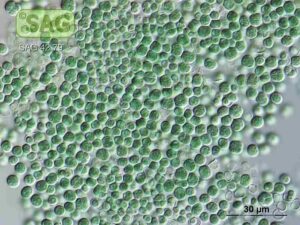
Also, photosynthetic bacteria exhibit metabolic flexibility, enabling them to utilize different sources of energy, such as light and different organic compounds. This adaptability is advantageous in changing environmental conditions.
Significance of Photosynthetic Bacteria in Freshwater Ecosystems
The significance of photosynthetic bacteria in freshwater ecosystems is hinged on primary production, nutrient cycling, water quality improvement, and metabolism of organic contaminants.
Photosynthetic bacteria are important primary producers in freshwater ecosystems. Through photosynthesis, they generate organic matter from inorganic substances, which is the basis of sustainability, of the food web. Several aquatic organisms depend on these bacteria as a source of food.
These bacteria are also effectively involved in nutrient cycling within freshwater ecosystems. They are instrumental in the uptake and recycling of essential nutrients such as carbon, nitrogen, and phosphorus. Through such functions, they help to maintain nutrient flow and energy transfer in the ecosystem, while conserving resources.
Photosynthetic bacteria can be beneficial in improving the quality of freshwater. They contribute to the removal of excess nutrients, such as phosphates nitrates and phosphates, which can cause water quality issues like eutrophication. In this way, they help maintain a healthier aquatic environment.
Metabolism of Organic Contaminants: Some photosynthetic bacteria are known for their ability to metabolize organic contaminants present in the water, contributing to the degradation of pollutants. Their metabolic versatility allows them to break down a wide range of organic substances.
Diverse Metabolic Modes: Photosynthetic bacteria exhibit various metabolic modes, enhancing their adaptability to different environmental conditions. This flexibility aids in nutrient cycling and organic matter decomposition.
Conclusion
Producers in freshwater ecosystems include;
1. Diatoms
2. Brown Algae
3. Green Algae
4. Cattails
5. Water Lilies
6. Alders
7. Aspens
8. Water Hyacinths
9. Mosses
10. Liverworts
11. Photosynthetic Bacteria
